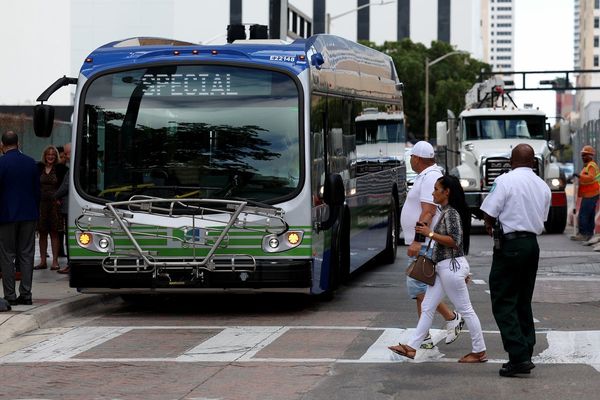Within a few days, India will complete 75 years as an independent political entity. The event is not without historical significance, for among the countries that emerged from Britain’s vast South Asian empire in 1947, India alone has maintained some stability. Stability, however, would be a low standard by which to judge India’s journey since 1947. So, how should it be judged, then? A recent commentator has argued that India may not have succeeded in economic terms but has remained a democracy, which is something to be proud of. But, surely, democracy is not only about the protocols of governance but as much about the outcomes that it produces. Thus, while the idea of democracy being ‘government by discussion’ establishes the norm that decision-making under a democracy ought to be participatory, this representation loses sight of democracy’s central aim.
Empowering the individual
The significance of democracy is that it aims to empower the individual to lead the kind of life that he or she values. With this understood, on its 75th anniversary India must be judged by the extent to which it has advanced human development. When the economy is viewed as an ecosystem for enabling human development, the extent to which it has succeeded must be part of the assessment of democracy itself.
This was implicit in Jawaharlal Nehru’s message to the nation on August 15, 1947. Nehru had first queried, rhetorically, “Whither do we go and what shall be our endeavour?”, and answered this as follows: “To bring freedom and opportunity to the common man, to the peasants and workers of India. To fight and end poverty and ignorance and disease. To build up a prosperous, democratic and progressive nation, and to create social, economic and political institutions that will ensure justice and fullness of life to every man and woman.” This understanding of the goal of Indian independence by the most consequential Indian of the moment was shared by millions of his compatriots who had participated in the movement for national independence.
Distant goal of opportunity
Nehru himself was not sanguine about the challenges that lay ahead, though. In his speech to the Constituent Assembly the previous day he had asked if India’s political representatives would deliver what was at stake, which was an India where equal opportunity prevailed. We can now see that this goal is far from having been attained.
From an economic point of view, though the demarcation is not always clear cut, there is a layering of the population according to caste and gender. Gender-based inequality is rampant in India; within every social group, women are worse off than their men. They are less nourished, less educated and have a representation in the institutions of governance far lower than their share of the population. While they participate equally in the elections, they are denied a place at the high table of governance, as it were. What is not evident in the official statistics, though, is the extent of women’s autonomy with respect to their lives. This is reflected in the very low female labour force participation in India compared to the rest of the world. It reinforces their secondary position in society by adding economic deprivation to the social restriction that discourages them from working outside the home.
Regional differentiation
On development indicators pertaining to health and education, not to mention poverty, China does far better than India. While this should hardly lead us to rush to celebrate human development in China — for personal freedoms are severely restricted in that country — it should certainly alert us to the failure of democracy in India to advance it.
However, the cliché that “whatever you may say about India, the opposite is also true” carries over in this instance too. There are States in India which compare quite well with China on human development indicators. So, there is a regional differentiation when it comes to development here. The commonly remarked upon pattern is that the south and the west do better than much of the rest of the country, the exception being the northeastern States, some of which have made remarkable strides in this sphere. And, the difference is considerable. For instance, data released by NITI Aayog in 2021 show multi-dimensional poverty in Bihar to be over 50% while it is only a little more than 1% in Kerala. Why, it may be asked, is it that in a country with mostly uniform laws across it, social and economic development is so uneven?
As with many institutions, democracy too is embedded in society, leaving some of its functioning to be determined by the social structure. The south and the west of India show greater development because they have witnessed greater social transformation. This has taken the form of a weakening of the traditional hierarchy, allowing for a greater say in governance of once-excluded groups, which leads to the adoption of a public policy that furthers the well-being of the latter.
For instance, the superior human development indicators of Kerala and Tamil Nadu have followed this social transformation. However, despite the progress made, the imprint of patriarchy and caste, respectively, remain writ large over the social map of even these States, pointing to the distance to be travelled to the attainment of equality of opportunity.
Nehru seems to have anticipated that merely adopting democracy as a form of governance would not assure a fulfilling life for all Indians. He could see that it was necessary to create the “social, economic and political” institutions that would enable this. It is important to realise that such institutions are not exclusively built or even promoted by the state. They can also arise from civil society, i.e., they may be created by the people themselves. However, in an India where universal public education was not seriously attempted, the potential for the creation of such institutions was limited.
Subversion of democracy
Not even Nehru was prescient enough to see the subversion of democracy by the Indian state that was to come after his time. First, there was the Emergency, and today, while the Constitution may not have been abrogated, civil liberties have a precarious existence. The freedom of expression of individuals is curtailed, the press has been intimidated and the religious minorities, particularly Muslims, feel insecure. There is a perceived weaponisation of the law by the state.
Towards the end of his life, Nehru publicly rued the fact that India had not achieved sufficient progress in agriculture, wryly observing that we seem to have imagined that crops would “somehow grow on their own”. After 75 years, we may have come to recognise a similar truth about our democracy. We seemed to have imagined that simply leaving things to our political representatives would somehow deliver us a happy country. Now we have learned that, rather like a plant, democracy too needs nurturing and realised what is meant by the maxim “the price of freedom is eternal vigilance”. It is not as if all Indians have ignored their role, as seen in the heroic efforts of Right to Information activists who have at times paid with their life for challenging both vested interests and the Indian state. On balance, though, India’s middle classes, who have benefited greatly from the economic policies of the past 75 years, have contributed relatively little to safeguard democracy in their country.
Some fear that the era of civil liberties is over in India, but this would be premature. We are still an electoral democracy, and the history of elections holds a clue to possibilities in the present. For a poor country, Indians displayed an unusually strong commitment to civil liberties in 1977. However, in 1989 and 2014, they conveyed that they also want their representatives to be free of even the slightest taint of corruption. Indeed, the political parties that led the restoration of liberty in 1977 would have been aided by Jayaprakash Narayan’s incorruptibility.
Pulapre Balakrishnan teaches economics at Ashoka University, Sonipat







